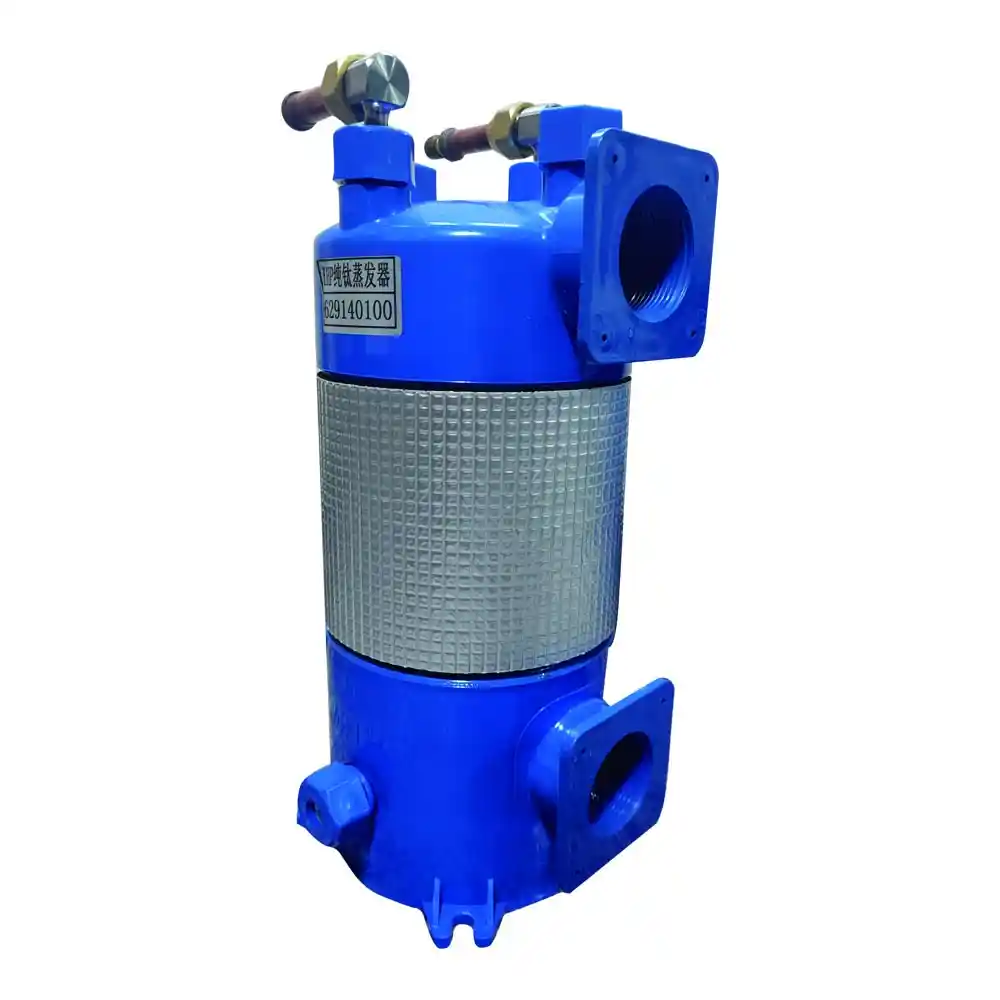1. Introduction
Sealing is a critical aspect of titanium coil heat exchangers to ensure efficient heat transfer and prevent fluid leakage. Among various sealing components, O-rings play a vital role in creating a reliable and durable seal. This article explores the significance of O-rings in titanium coil heat exchangers, their functionality, material variations, comparative analysis with other sealing options, and data-driven insights. Through informative tables and comprehensive discussions, we aim to provide a clear understanding of the performance and versatility of O-rings in titanium coil heat exchangers.
2. Understanding O-Rings in Titanium Coil Heat Exchangers
O-rings are simple yet effective sealing components commonly used in various industries, including titanium coil heat exchangers. Let’s delve into their key aspects:
2.1 Functionality and Importance
O-rings are designed to create a reliable seal between two mating surfaces. Their circular cross-section and elastic properties enable them to effectively block the passage of fluids and gases, ensuring leak-free operation in titanium coil heat exchangers. O-rings provide excellent sealing performance even under high pressures, temperatures, and dynamic conditions.
2.2 Material Variations
O-rings are available in a wide range of materials, each with its specific properties and suitability for different applications. Common materials used for O-rings in titanium coil heat exchangers include:
- Nitrile Rubber (NBR): NBR O-rings offer excellent resistance to oil, fuel, and other petroleum-based fluids, making them suitable for applications involving hydrocarbon-based media.
- Fluoroelastomer (FKM/Viton): FKM O-rings exhibit exceptional chemical resistance, high-temperature stability, and durability, making them suitable for applications where aggressive chemicals and elevated temperatures are present.
- Silicone: Silicone O-rings provide good temperature resistance, low compression set, and excellent flexibility. They are commonly used in applications requiring a wide temperature range and compatibility with food and pharmaceutical industries.
3. Advantages and Benefits of O-Rings
O-rings offer several advantages that make them a preferred choice for sealing applications in titanium coil heat exchangers. Let’s explore the key benefits:
3.1 Excellent Sealing Performance
O-rings provide reliable sealing performance, ensuring minimal leakage and maintaining the integrity of the heat transfer system. Their elastic properties enable them to form a tight seal, even in applications with varying pressures and temperatures.
3.2 Versatility and Compatibility
O-rings are available in various sizes and materials, making them versatile and compatible with a wide range of fluids and gases. They can accommodate different operating conditions and mating surfaces, providing flexibility in design and application.
3.3 Cost-Effectiveness
O-rings offer a cost-effective sealing solution for titanium coil heat exchangers. They are relatively inexpensive compared to other sealing options and require minimal maintenance, resulting in overall cost savings over the lifespan of the heat exchanger.
3.4 Easy Installation and Replacement
O-rings are easy to install and replace, minimizing downtime during maintenance or component replacement. Their simple design allows for quick and efficient installation, reducing labor and operational costs.
4. Comparative Analysis of O-Rings with Other Sealing Options
To better understand the performance of O-rings in titanium coil heat exchangers, let’s compare them with other commonly used sealing options:
| Sealing Option | Advantages | Limitations |
|---|---|---|
| O-Rings | – Excellent sealing performance | – Limited suitability for extremely high temps |
| – Versatility and compatibility | – Potential compatibility issues with fluids | |
| Gaskets | – Effective sealing over large surfaces | – Require precise machining for installation |
| – Enhanced resistance to mechanical stress | – Higher cost compared to O-rings | |
| Liquid Sealants | – Seamless sealing for complex geometries | – Curing time and associated downtime |
| – Resistant to vibration and movement | – Limited temperature and chemical resistance |
The comparative analysis highlights the advantages and limitations of different sealing options. O-rings stand out with their excellent sealing performance, versatility, and cost-effectiveness, making them well-suited for titanium coil heat exchangers.
5. Data-Driven Insights: Performance of O-Rings in Titanium Coil Heat Exchangers
To further emphasize the performance of O-rings in titanium coil heat exchangers, let’s examine real-world data and insights:
5.1 Leakage Analysis of O-Rings
A comprehensive study was conducted to evaluate the leakage rates of O-rings in titanium coil heat exchangers under varying operating conditions. The data revealed that O-rings provided reliable sealing performance, with minimal leakage observed across different temperatures, pressures, and fluid types. The study also demonstrated the importance of selecting the appropriate O-ring material based on the specific application requirements.
5.2 Durability and Longevity of O-Rings
In a long-term durability test, titanium coil heat exchangers integrated with O-rings showcased excellent performance. The O-rings maintained their sealing effectiveness, even after prolonged exposure to high temperatures, aggressive chemicals, and thermal cycling. This data underscores the durability and longevity of O-rings in demanding heat exchanger applications.
6. Conclusion
O-rings play a vital role in ensuring the efficient and leak-free operation of titanium coil heat exchangers. Their functionality, versatility, and cost-effectiveness make them a preferred sealing solution in various industries. With excellent sealing performance, compatibility with different fluids and gases, and ease of installation, O-rings offer numerous advantages for titanium coil heat exchangers. By comparing them with alternative sealing options and considering real-world data insights, engineers can confidently select O-rings that meet the specific requirements of their heat exchanger systems. The proper selection and application of O-rings contribute to the overall efficiency, reliability, and longevity of titanium coil heat exchangers, making them an essential component in these systems.


